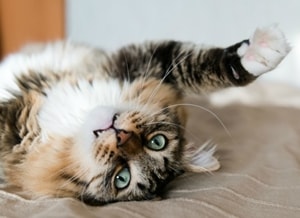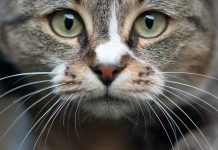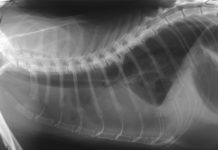Hyperlipidemia or high cholesterol in cats is a feline condition that’s characterized by the abnormally excessive levels of fat and / or fatty substances in the blood. This feline condition might be a main or secondary issue, which may result from a causal condition. In this article, we will be discussing more of this feline condition. If you want to learn more about it, feel free to give this article a read.
High Cholesterol in Cats: What is this feline condition?

Hyperlipidemia or high cholesterol in cats may either be primary or a secondary condition, which may result from a causal condition, just like diabetes mellitus. A swift care is important to both lowering the high levels of cholesterol to its normal levels, as well as treat whatever associated issues, which may have caused it to happen.
The high cholesterol levels in cats is a lipid metabolic condition, which is characterized by the excessively high levels of fat or fatty substances in the bloodstream. After a cat eats its meal, cholesterol and triglycerides are being formed from the fats, which are consumed. Additionally, the lipoproteins work in delivering these fats into various organs in the whole body for the appropriate body function. Commonly, these fats consumed increase the levels of cholesterol for 3-10 hours after eating. The raised cholesterol levels more than 12 hours after eating are an indication of high cholesterol levels.
Causes of Hyperlipidemia in Cats
The high cholesterol in cats as a main condition is actually rare in cats, because of the way that cats are capable of metabolizing the consumed fats. Due to this fact, the high cholesterol elves is cats is commonly seen as an indication of some other conditions. further the possible causes of high cholesterol levels may include the following:
- Nephrotic syndrome
- Fatty meal consumption
- Defects in lipid carrier enzymes or proteins
- Cholesterol ester storage disease
- Pregnancy
- Genetics
- Bile duct obstruction
- Inflammation of the pancreas
- Adrenal gland problems
- Diabetes mellitus
- Thyroid problems
Symptoms of Hyperlipidemia in Cats
The symptoms might be mild and may become more noticeable if the cholesterol of the cat has been high for a long time. These symptoms may include the following:
- Small-orange-colored bumps on the skin, which are filled with fatty substance
- Horner’s syndrome
- Radial nerve paralysis
- Tibial nerve paralysis
- Excess blood cells in the eyes
- White appearance of the retina
- Seizures
- Dehydration
- Diarrhea
- Vomiting
- Weight loss
- Loss of appetite
- Fever
- Abdominal distention
- Abdominal pain
Prognosis of Hyperlipidemia in Cats

The vet may need to know the complete medical history of the cat. This may include any latest changes in the diet, a comprehensive list of all of the signs and symptoms the cat’s experiencing, when the signs and symptoms started and some other conditions, which might have caused the levels of cholesterol to rise. Moreover, the vet may examine the cat physically, looking for abdominal distention, observing for any indications of cutaneous xanthomata, as well as examining the eyes of the cat.
Moreover, the cat will most probably need to get hospitalized to test the cholesterol levels properly. The cat might also need to fast for about 12 hours, right before having its laboratory tests done. Additionally, a CBC, chemical blood profile, urinalysis, and biochemical analysis might be taken.
The vet may also look for some other diseases or conditions in the laboratories, might have caused the cholesterol levels to rise. Further, these conditions might need some additional testing for the proper diagnosis that might include X-rays, ultrasounds, or further labs, just like a blood test to search for thyroid issues.
Treatment for Hyperlipidemia in Cats
Medication
In the event that the below treatment options for any main conditions don’t lower the cholesterol to its proper levels, the vet might prescribe some medications to help. Furthermore, these medications might include niacin that lowers the triglyceride production. One is Chitosan –this reduces the immersion of the consumed fats. On the other hand, Gemfibrozil –this increases the lipoprotein lipase production.
Moreover, the vet may schedule some follow-up appointments for the cat’s serum triglyceride levels to be monitored. Further, this might be essential for the deterrence of conceivably fatal sessions of acute pancreatitis due to abnormally high levels of fats on the blood.
Insulin
Cats that have high levels of cholesterol because of diabetes might be given a prescription medicine for insulin injections. Additionally, when the blood sugar levels have already been stabilized, the cholesterol levels may decrease.
Supplements
Various fish oil supplements have already been found to be beneficial in lowering the high levels of triglyceride. Further, the veterinarian might prescribe some omega-3 fatty acid fish oil supplements, in order to help.
Dietary Changes
The cat may be placed on a low-fat diet plan with a moderate intake of protein. Moreover, this diet is commonly fiber-rich and has less than 10% of fat.









